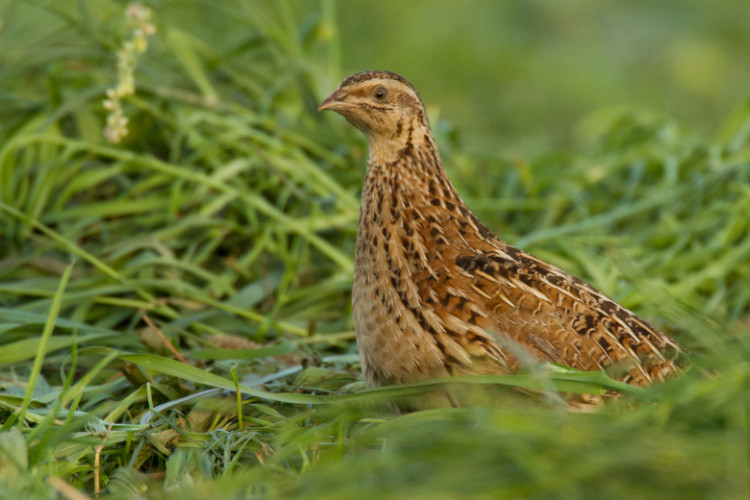
Quail - Forst Eibenstein
The quail is a small bird found in different parts of the world. It belongs to the pheasant family and is known for its small size, camouflaged plumage and characteristic calling behavior.
Quails are relatively small birds, reaching a length of about 15 to 20 centimeters and weighing about 100 to 150 grams. Their plumage is earthy tones, which provides them with good camouflage in their natural habitat. The pattern varies by species, but typically quail have brown or beige feathers with black stripes or spots.
These birds are found in a variety of habitats, including grasslands, cornfields, thickets, and even semi-deserts. They are usually ground birds and spend most of their time on the ground foraging and moving around. Because of their ability to hide well, quail are often difficult to spot and will often attract attention only by their distinctive call.
The call of the quail is one of its most famous features. The male emits a characteristic repetitive call often described as “quail-quail.” This call is heard mainly during the mating season and serves to signal the presence of the male and attract females. The call is so typical of the quail that it is often associated with its name.
Quail are omnivorous and feed on a variety of foods including seeds, grasses, forbs, insects and snails. They often pick their food from the ground or low plants and have a preference for seeds and small invertebrates.
Quails are known for their reproductive behavior. The male often performs spectacular courtship flights during the mating season, emitting his characteristic calls. Females then lay their eggs in shallow nests on the ground, which they carefully camouflage to protect them from potential predators. The incubation period varies by species, but is generally between two and three weeks.
Quails are valued both for their beauty and tender meat. They are bred for hunting in some countries and are a popular delicacy in the kitchen. However, it is important to comply with hunting regulations and sustainable practices to protect and maintain the quail population.
The quail is a fascinating little bird, which despite its rather inconspicuous appearance causes a great fascination. Their characteristic call and adaptability to different habitats make them an interesting
Component of the animal world. By protecting their habitats and promoting sustainable practices, we can ensure that quail continue to be present in our natural environment well into the future.
